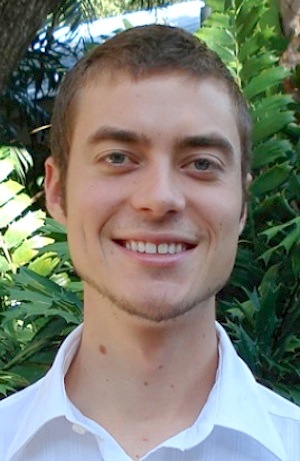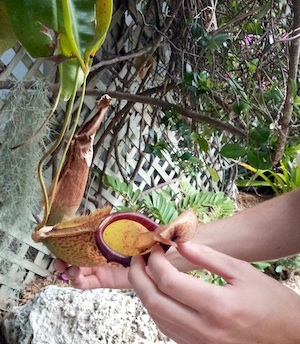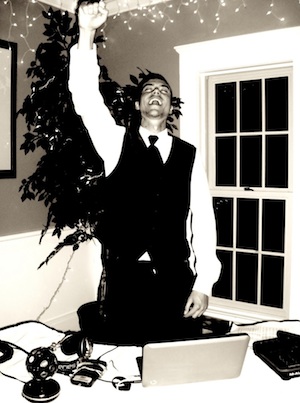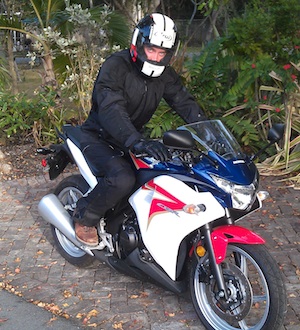Rick Hederstrom: Speaking the 'Plant' Truth
Rarely are career paths preordained. Instead, they often develop around hobbies, interests and learned skills until an opportunity appears that is a perfect fit.
Rick Hederstrom's journey began as a youthful golf-pro-hopeful on courses in Virginia Beach, Va. and Chardon, Ohio, and detoured into drafting car designs. Ultimately, his path crossed with the owners of Key Largo's Kona Kai Resort, Gallery and Botanic Gardens, and he became their first-ever resident ethnobotanist.
An articulate 25-year-old, Hederstrom said his goal-oriented nature led to a degree in ethnobotany, the study of the relationships that exist between plants and people, at prestigious Connecticut College in New London, Conn. Through what he called divine intervention, he was awarded enough financial grants to fully cover the institution's staggering $43,000 yearly tuition.
Grounded in a strong Catholic faith and kinship with the outdoors and nature, Hederstrom also possesses a fascination with the healing qualities of plants. This led him to pursue ethnobotany, envisioning it as a long-term career that was a "safer bet" than long hours practicing on golf greens or drawing concept cars indoors at a drafting table.
"I was initially most interested in plants' usefulness as medicine and perhaps playing a role in developing new treatments and cures from plants," he said. "Interestingly, we [humans] use plants as medicine, but plants produce compounds that act as poison to whatever wants to eat them, like insects. It's crazy that we use these same defensive compounds to heal ourselves from disease."
An opportunity to study abroad in his junior year landed him in the Peruvian Andes and rainforest for three months. He found himself immersed in fieldwork with the people of Cuzco and the outlying lowlands, learning how they used plants in everyday life.
"For [Peruvians], the use of plants is a very serious ritual experience and forms the basis of their world view," Hederstrom said. "Ayahuasca, a mixture of certain plants, is intensely spiritual, hallucinogenic and is conducive to a positive healing or state of peace."
This idea draws an interesting parallel between Peruvian culture, which is more focused on the quality of life within an individual's spirit, and an American culture that strives for longevity.
The Botanic Gardens at Kona Kai subscribes to a mission of enrichment, enlightenment, education and enjoyment. Today, as the facility's associate director, Hederstrom shares with visitors the crucial and indispensable roles plants play in our survival.
Guests touring the gardens learn that each living, breathing organism has a name, a story to tell and complexity and beauty beyond being just a collection of lovely green objects. They also can sample delicious fruits he selects from the tropical fruit garden.
"Coconut water from the coconut palms' fruit provides a valuable source of fresh water and can substitute as intravenous fluid for hydration," Hederstrom said, "because it is sterile and has the right balance of minerals and electrolytes."
His tasks include helping nurture the gardens by inventorying the plant collections; photographing and noting their condition, flowering and fruiting; taking measurements and selecting new plants to be added to the collections as planning continues for the facility's long-term future.
He also pens "The Diary of the Botanic Gardens at Kona Kai," a blog that delivers an insider's peek into the world of ethnobotany.
Hederstrom spends much of his free time at home in spiritual or religious reading, prayer and meditation, or attending Mass and participating in activities at San Pedro Catholic Church in Tavernier. He also entertains a whimsical desire to deejay in the Keys, mixing a variety of electronic music, but for now is satisfied with motorcycle rides, exercising and spending time around the water.
"I feel great when I am outdoors, in communion with nature, God's manifestation in its purest form," he said.

At 25, Hederstrom is the first-ever resident ethnobotanist at Kona Kai Resort, Gallery and Botanic Gardens.

During garden tours, Hederstrom explains the origins and uses for many tropical plants, including the unusual pitcher plant, or Nepenthes 'Miranda' that is considered a carnivore, and features a "stomach" that contains a syrupy liquid of its own production that is used to drown the prey.

One of Hederstrom's loves is music, sometimes affording him the chance to deejay, another of his hidden talents.

Days away from work are spent on the water or in quiet meditation, but there is also a need for speed.
